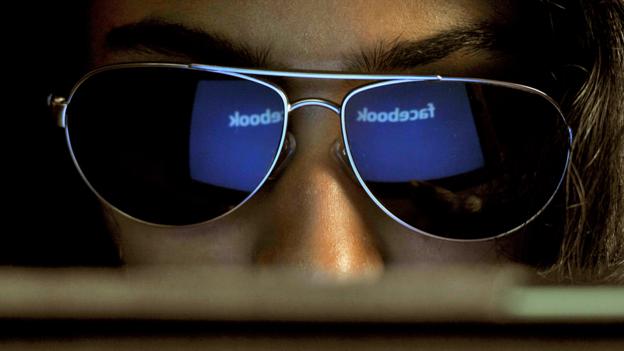Home truths for online falsehoods
-
Release time:2013-04-27

Browse:6143
-

(Copyright: Getty Images)
A series of recent hacks, lies and fake profiles calls into question the immediacy and reliability of social media, says Tom Chatfield.
As Mark Twain once said, a lie can be half way around the world before the truth has got its boots on. Or was it Winston Churchill, or James Callaghan, or Terry Pratchett? The internet is undecided. It seems likely that all of the above were paraphrasing an old proverb – but, depending on where you search and who you ask, you can more-or-less pick your own truth.
When it comes to current affairs, the power of digital falsehood can count for a great deal. Earlier this month, a false message posted by hackers to the Twitter account of the Associated Press – which read “Breaking: Two Explosions in the White House and Barack Obama is injured” – temporarily wiped 150 points off the Dow Jones index, and led to an FBI investigation. In the appalled aftermath of the Boston marathon bombings, rumours and conspiracies were almost impossible to avoid, ranging from allegations against an innocent Saudi witness to a digitally manipulated hoax clip from the cartoon series Family Guy.
Yet perhaps the most intriguing online untruth of recent weeks – and the most telling indictment of rapid-reaction social media habits – was not a tweet or an attribution, but an entire person: Santiago Swallow.
Steve Jobs’ phablet
Swallow’s credentials put most professional tech gurus to shame. A TED and South by Southwest speaker, his dauntingly detailed Wikipedia page described him as a “motivational speaker, consultant, educator, and author” devoted to “understanding modern culture in the age of social networking, globally interconnected media, user generated content and the Internet”. He has a book coming out later this year and over 80,000 followers on Twitter hanging on his every gnomic word.
The only problem is that he doesn’t exist. Swallow was created as an experiment by Kevin Ashton, a (real) technologist most famous – until now – for coining the phrase “the internet of things.” In a piece for Quartz magazine, called “How to become internet famous for $68”, Ashton explained how it took him just two hours and less than $70 to breathe life into his brainchild: “I generated his name on ‘Scrivener,’ a word processor for writers and author … I gave Santiago a Gmail account, which was enough to get him a Twitter account. Then I went to the web site fiverr.com, the online equivalent of a dollar store, and searched for people selling Twitter followers. I bought Santiago 90,000 followers for $50...”
And so it went on, from a striking portrait created by mashing up Google images to an automated Tweeting service generating ceaseless cod-expert opinions: “[Santiago’s] breezy platitudes come from half a dozen ‘mad-lib’-like phrases of the ‘if this, then that’ variety, coupled with a list of nouns from the new age TED/SXSW hipster vocabulary: dolphins, phablets, Steve Jobs, mobile, Tom’s shoes...”
Topped by the fake Wikipedia profile and website, Ashton had crafted a near-perfect imitation of the personas crafted by thousands of online “experts”. At least, he had done so as long as you didn’t look into the details too closely – which is a large part of the point of social media services. Numbers and popularity are a potent shorthand for credibility and expertise. To adapt the proverb: once someone has got halfway around the world, you don’t always stop to check whether they’ve put their boots on.
Truth or lie?
Writing in the New Yorker on the aftermath of the Boston bombings, Adam Gopnik reflected on the relationship between social media, journalism and expertise. “We are now,” he argued, “a nation of experts, with millions of people who know the meaning of everything that they haven’t actually experienced.” Making meanings, telling stories: this is what people do. Except that – as a creation like Santiago Swallow elegantly illustrates – much of the time people themselves are more like a medium through which stories flow. Second and third hand experience passes through our hands online as fast as we can retweet it, together with second hand claims and words and beliefs. As anyone who has watched a major event refracted live through the lens of social media will know, simply being part of something – following and the joining the countless ranks of contributors – can both overwhelm and seduce.
Just a few days after his exposure as a fake, Santiago Swallow’s twitter feed was back online, this time under the acknowledgement that he is “a pure product of the internet”. The account has over 60,000 followers, and counting. Most of them appear to be legitimate – while his automated ramblings are increasingly difficult to distinguish from “authentic” provocations (“Morning has broken. It is going to take from now until dusk to fix it.”). Reflecting the world back to itself does not make you right, or mean you have anything to say. But once you’re officially a news event yourself, all justifications are suspended.
For those despairing of any form of honesty, there’s some good news to be found in analyses of what does and doesn’t get weeded out over time. As Jamie Bartlett, head of the centre for the analysis of social media at think-tank Demos, recently observed in the Huffington Post: “Given the immediacy and ease of propagation, plausible misinformation often spreads very quickly… [but] untrue stories are usually fairly short lived due to some of the Twitter user community acting as information brokers who will actively check and debunk information.”
In one study of tweets produced following the 2010 earthquake in Chile, around 96% of tweets containing truthful information were subsequently “affirmed” by users, while around 50% of rumours discovered to be false were “denied” – a statistic that suggests a different kind of principle in operation. Frenzies of speculation may be easy to whip up – and have troubling immediate consequences – but, over time, falsehoods will often be sniffed out.
All of which brings us back to Mark Twain, Winston Churchill, James Callaghan and Santiago Swallow. Would Santiago have been outed even if his creator hadn’t exposed him? Almost certainly. An online lie, though, never quite vanishes. Having leapt across the world, its echoes wait to snare the unwary – or those who simply enjoy choosing their own truths. Perhaps the hardest thing to resist is a story that wants you to tell it.
.com domain name just cost $11.99/year!
.cn domain name just cost $17.96/year!
.tw domain name just cost $45.16/year!
.hk domain name just cost $22.63/year!And you'll get a IDN.HK domain name if you would like to pay an extra $1.You can click on www.eranet.com if you're interested.
Search


 China Yuan RMB
China Yuan RMB U.S. Dollar
U.S. Dollar Euro
Euro British Pound
British Pound Canadian Dollars
Canadian Dollars Australian Dollars
Australian Dollars Hong Kong Dollars
Hong Kong Dollars Vietnamese Dong
Vietnamese Dong More Info
More Info 







